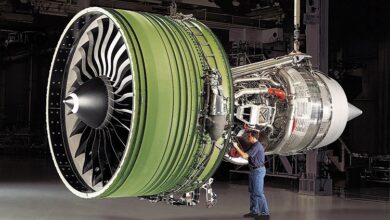The Evolution of Parking Payment Systems

Parking has always been a critical aspect of urban life, with growing populations and increasing vehicle numbers posing significant challenges for city planners and drivers alike. Traditional parking methods, characterized by coin-operated meters and manual ticketing systems, are becoming obsolete as cities and businesses adopt more efficient, user-friendly, and technologically advanced solutions. In this context, parking payment systems have evolved significantly, transforming the way we manage and utilize parking spaces.
The Traditional Approach and Its Drawbacks
Historically, parking payment systems were rudimentary, often involving mechanical meters that required coins for a set period of parking. While simple, these systems had numerous limitations. They required constant maintenance, were prone to malfunction, and did not provide real-time data on parking space availability. Additionally, they were inconvenient for drivers, who needed to have the correct change and often had to walk back to their cars to place a ticket on the dashboard.
The advent of digital technology paved the way for more sophisticated solutions. The initial transition saw the introduction of electronic meters that accepted credit cards and offered limited data capabilities. However, even these systems had their shortcomings, such as the need for physical presence to make payments and a lack of integration with broader city management systems.
Modern Parking Payment Systems
Today’s parking payment systems are far more advanced, leveraging cutting-edge technology to offer seamless, efficient, and user-friendly experiences. These systems integrate with mobile apps, use real-time data analytics, and often incorporate automated license plate recognition (ALPR) and other innovations.
1. Mobile Payment Apps: Mobile apps have revolutionized parking payment systems. Drivers can now find, reserve, and pay for parking spaces using their smartphones. These apps often provide real-time information on parking availability, pricing, and even allow for the extension of parking time remotely. Precision Technology Solutions, for example, offers a comprehensive mobile platform that simplifies the entire parking process, ensuring convenience for users and efficiency for parking managers.
2. Contactless Payments: The COVID-19 pandemic accelerated the adoption of contactless payment methods. Modern parking meters and payment kiosks now support NFC (Near Field Communication) technology, enabling drivers to pay using their smartphones, smartwatches, or contactless credit/debit cards. This reduces physical contact, enhancing safety and hygiene.
3. Automated License Plate Recognition (ALPR): ALPR technology has brought a significant leap in parking management. Cameras installed at entry and exit points capture vehicle license plates, automatically linking them to the parking payment system. This allows for seamless entry and exit without the need for physical tickets. It also aids in enforcing parking regulations and reducing instances of unpaid parking.
4. Dynamic Pricing: Some advanced parking systems utilize dynamic pricing models, where parking fees fluctuate based on demand and supply. This approach helps in optimizing parking space utilization and reducing congestion in high-demand areas. Precision Technology Solutions has implemented dynamic pricing algorithms that adjust rates in real-time, ensuring a balance between availability and affordability.
Innovative Parking Solutions
As urban centers continue to grow, innovative parking solutions are becoming essential to address the increasing demand for parking spaces. Precision Technology Solutions is at the forefront of this innovation, offering a suite of cutting-edge technologies designed to streamline parking management and enhance the user experience.
1. Smart Parking Sensors: These sensors are installed in individual parking spaces and provide real-time data on space availability. Connected to a central management system, they help drivers locate free spaces quickly and efficiently, reducing the time spent searching for parking and minimizing traffic congestion.
2. Integrated Parking Management Systems: By integrating various components such as ALPR, mobile apps, and payment kiosks into a single cohesive system, Precision Technology Solutions offers a holistic approach to parking management. This integration enables better data analytics, improving decision-making for both operators and users.
3. Electric Vehicle (EV) Charging Integration: With the rise of electric vehicles, integrating EV charging stations into parking facilities is becoming increasingly important. Precision Technology Solutions provides solutions that combine parking management with EV charging, allowing drivers to charge their vehicles while parked. This not only meets the growing demand for EV infrastructure but also attracts more customers to parking facilities.
4. Park-and-Ride Solutions: To alleviate congestion in city centers, park-and-ride systems are gaining popularity. These solutions allow drivers to park in designated lots on the outskirts of urban areas and use public transportation to reach their final destinations. Precision Technology Solutions offers advanced park-and-ride systems that integrate parking payment with public transit ticketing, providing a seamless and efficient commuting experience.
The Future of Parking Payment Systems
The future of parking payment systems lies in continued innovation and integration with broader smart city initiatives. As urban areas become more connected and data-driven, parking solutions will need to evolve accordingly. Here are some trends that are likely to shape the future of parking payment systems:
1. Autonomous Vehicles: With the advent of autonomous vehicles, parking systems will need to adapt to accommodate self-parking cars. This could involve the development of specialized infrastructure that communicates with autonomous vehicles, guiding them to available spaces and processing payments automatically.
2. Blockchain Technology: Blockchain can enhance the security and transparency of parking payment systems. By creating a decentralized ledger for transactions, blockchain can prevent fraud, reduce administrative costs, and ensure a tamper-proof record of parking payments.
3. Enhanced Data Analytics: The integration of artificial intelligence (AI) and machine learning (ML) will enable more sophisticated data analytics, providing deeper insights into parking patterns and behaviors. This can help optimize pricing strategies, predict demand, and improve overall efficiency.
4. Environmental Sustainability: As cities aim to reduce their carbon footprints, parking systems will need to contribute to sustainability goals. This could involve promoting the use of eco-friendly vehicles, implementing green parking certifications, and integrating renewable energy sources into parking infrastructure.
Conclusion
Parking payment systems have come a long way from their humble beginnings. Today, they are sophisticated, tech-driven solutions that enhance convenience for drivers and efficiency for operators. Companies like Precision Technology Solutions are leading the charge with innovative parking solutions that integrate advanced technologies, address contemporary challenges, and pave the way for the future of urban mobility. As cities continue to grow and evolve, so too will the systems that manage our parking spaces, ensuring that they remain an integral part of the urban landscape.



